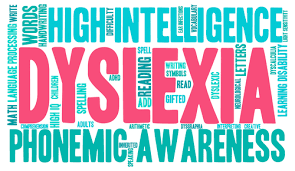Contacts
Sindy Oldham
Coordinator of Multi-Tiered Systems of Support
903.262.1959
Gary Administration Building
Blaire Buchanan
Coordinator of Intervention Assessment & Compliance
903.262.1030
Gary Administration Building
Quick Links
Dyslexia

The Tyler ISD Dyslexia program supports the Teaching for Robust Understanding (TRU) precept of Equitable Access to Content through classroom activity structures that invite and support the active engagement of all of the students with core disciplinary content being addressed. All students are involved in meaningful ways.
Texas is unique in that it has a law to specifically identify and address the needs of the student with dyslexia.
Dyslexia Defined
As defined in TEC §38.003 (The Dyslexia Law):
“Dyslexia” means a disorder of constitutional origin manifested by a difficulty in learning to read, write, or spell, despite conventional instruction, adequate intelligence, and socio-cultural opportunity.
“Related disorders” includes disorders similar to or related to dyslexia such as developmental auditory imperception, dysphasia, specific developmental dyslexia, developmental dysgraphia, and developmental spelling disability.
Dyslexia
Texas Administrative Code §74.28 (State Board of Education Rule) §74.28. Students with Dyslexia and Related Disorders.
The board of trustees of a school district must ensure that procedures for identifying a student with dyslexia or a related disorder and for providing appropriate instructional services to the student are implemented in the district. These procedures will be monitored by the Texas Education Agency (TEA) with on-site visits conducted as appropriate.
A school district's procedures must be implemented according to the State Board of Education (SBOE) approved strategies for screening, and techniques for treating, dyslexia and related disorders. The strategies and techniques are described in "Dyslexia Handbook: Procedures Concerning Dyslexia and Related Disorders," a set of flexible guidelines for local districts that may be modified by SBOE only with broad-based dialogue that includes input from educators and professionals in the field of reading and dyslexia and related disorders from across the state. Screening should be done only by individuals/professionals who are trained to assess students for dyslexia and related disorders.
A school district shall purchase a reading program or develop its own reading program for students with dyslexia and related disorders that is aligned with the descriptors found in "Dyslexia Handbook: Procedures Concerning Dyslexia and Related Disorders." Teachers who screen and treat these students must be trained in instructional strategies that utilize individualized, intensive, multisensory, phonetic methods and a variety of writing and spelling components described in the “Dyslexia Handbook: Procedures Concerning Dyslexia and Related Disorders.” The professional development activities specified by each district and/or campus planning and decision making committee shall include these instructional strategies.
Before an identification or assessment procedure is used selectively with an individual student, the school district must notify the student’s parent or guardian or another person standing in parental relation to the student.
Parents/guardians of students eligible under the Rehabilitation Act of 1973, §504, must be informed of all services and options available to the student under that federal statute.
Each school must provide each identified student access at his or her campus to instructional programs required in subsection (c) of this section and to the services of a teacher trained in dyslexia and related disorders. The school district may, with the approval of each student’s parents or guardians, offer additional services at a centralized location. Such centralized services shall not preclude each student from receiving services at his or her campus.
Because early intervention is critical, a process for early identification, intervention, and support for students at risk for dyslexia and related disorders must be available in each district as outlined in the “Dyslexia Handbook: Procedures Concerning Dyslexia and Related Disorders.”
Each school district shall provide a parent education program for parents/guardians of students with dyslexia and related disorders. This program should include: awareness of characteristics of dyslexia and related disorders; information on testing and diagnosis of dyslexia; information on effective strategies for teaching dyslexic students; and awareness of information on modification, especially modifications allowed on standardized testing.
Source: The provisions of this §74.28 adopted to be effective September 1, 1996, 21 TexReg 4311; amended to be effective September 1, 2001, 25 TexReg 7691; amended to be effective August 8, 2006, 31 TexReg 6212; amended to be effective August 24, 2010, 35 TexReg 7211.
The Dyslexia Handbook outlines the guidelines that TEA recommends districts follow to comply with the dyslexia law.
